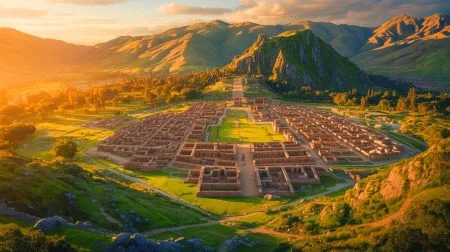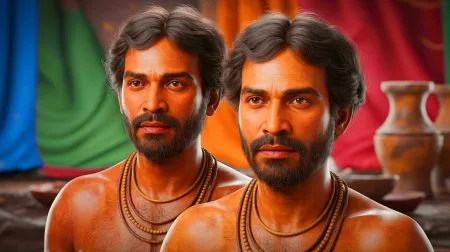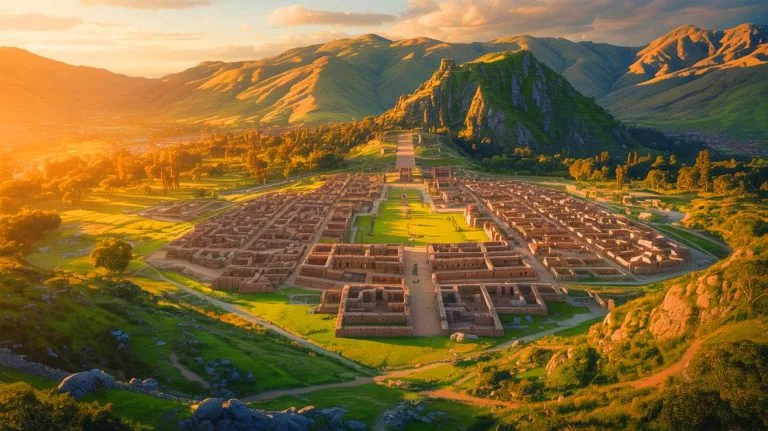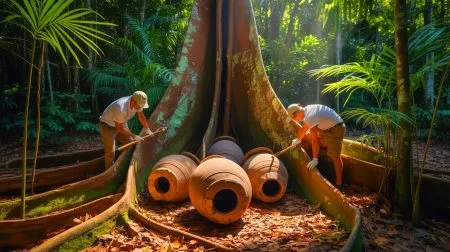| IN A NUTSHELL |
|
The recent discovery of the ancient city of Peñico in Peru promises to reshape our understanding of early civilizations in the Americas. This 3,800-year-old city, a part of the Caral civilization, offers a unique glimpse into a society that thrived in harmony with its environment and other cultures. Unlike the militaristic tendencies of many ancient societies, the Caral people embraced a model of peaceful coexistence, trade, and cultural exchange. Peñico’s unearthing not only enriches our historical knowledge but also presents valuable lessons for modern society, particularly in the context of climate adaptation and sustainable living.
The Peaceful Caral Civilisation: A Model of Harmony
The Caral civilization, often regarded as the cradle of civilization in the Americas, stands out for its peaceful nature. Unlike the Aztecs, Maya, and Inca, who are often associated with conflict and militarism, the Caral people built their society on principles of non-violence and cooperation. According to Dr. Ruth Shady, the archaeologist leading the excavation of Peñico, this philosophy was deeply embedded in their social structures. Archaeological evidence supports this, as there are no signs of defensive walls or weapons in their settlements. This defies the common perception that ancient civilizations were predominantly warlike.
The absence of militarism likely contributed to the Caral civilization’s longevity and stability. They thrived in the arid Supe Valley, maintaining extensive trade networks that reached the Andean valleys and even as far as Ecuador and Bolivia. These interactions were marked by peaceful exchanges rather than conflict. “They had intercultural relationships with people of the jungle, the mountains, and across large distances, but always peacefully,” explained Shady. This approach to expansion and cooperation highlights Caral as a unique societal model in ancient history.
Peñico and Its Role in the Caral Legacy
Peñico is more than just an archaeological site; it is a pivotal discovery offering fresh insights into the Caral civilization’s adaptability to environmental challenges. Located in the Supe Valley, Peñico features 18 structures, including ceremonial temples and residential compounds. These structures provide a glimpse into the urban layout and social organization of the Caral people. Most notably, Peñico demonstrates how these early inhabitants lived in harmony with their environment.
The discovery continues the Caral tradition of sustainable living. Dr. Shady remarked, “Peñico continues Caral’s tradition of living in harmony with nature and relating to other cultures with respect.” This attitude is evident in their use of available resources without depleting them. The Caral people designed cities that could withstand harsh desert conditions, incorporating seismic-resistant architectural features. This reflects their advanced understanding of geography and environmental adaptation.
Surviving Crisis: Caral’s Response to Climate Change
Caral’s ingenuity extended beyond peaceful cooperation to include their response to environmental challenges. According to Shady, the Caral civilization was not immune to the effects of climate change. “Climate change caused a crisis in Caral,” Shady noted. “The rivers and fields dried up, forcing them to abandon urban centers, a scenario mirrored in ancient Mesopotamia.” This demonstrates how early civilizations contended with environmental shifts long before the modern era.
In response to climate-induced challenges, the Caral people displayed remarkable resilience. They adapted their agricultural practices, employing sophisticated irrigation systems to manage droughts and water shortages. This adaptability forms part of Caral’s broader legacy, underscoring the importance of sustainable living and environmental awareness. Their ability to thrive in the face of adversity offers valuable lessons for contemporary societies dealing with climate change.
Lessons from Peñico: A Vision for the Future
As the world grapples with its own climate crisis, the Caral civilization offers important insights, particularly in their strategies for coping with environmental stress. Dr. Shady emphasized, “There are many things we have to do as we’re facing climate change. We have to change how we see life and how we see the changes happening to our planet.” The Caral people’s ability to adapt without resorting to violence or resource exploitation presents a model for modern societies aiming to mitigate climate impacts.
Peñico, along with other Caral archaeological sites, serves as a reminder that sustainable living is not a new concept. These ancient practices, which emphasized balance and respect for nature, are increasingly relevant as the world faces unprecedented environmental challenges. Through Peñico and the Caral civilization, we glimpse a society that thrived by honoring the interconnectedness of life, nature, and cultural exchange. Could these principles serve as a blueprint for a sustainable future in our modern world, and are we ready to embrace them?
Did you like it? 4.4/5 (21)





